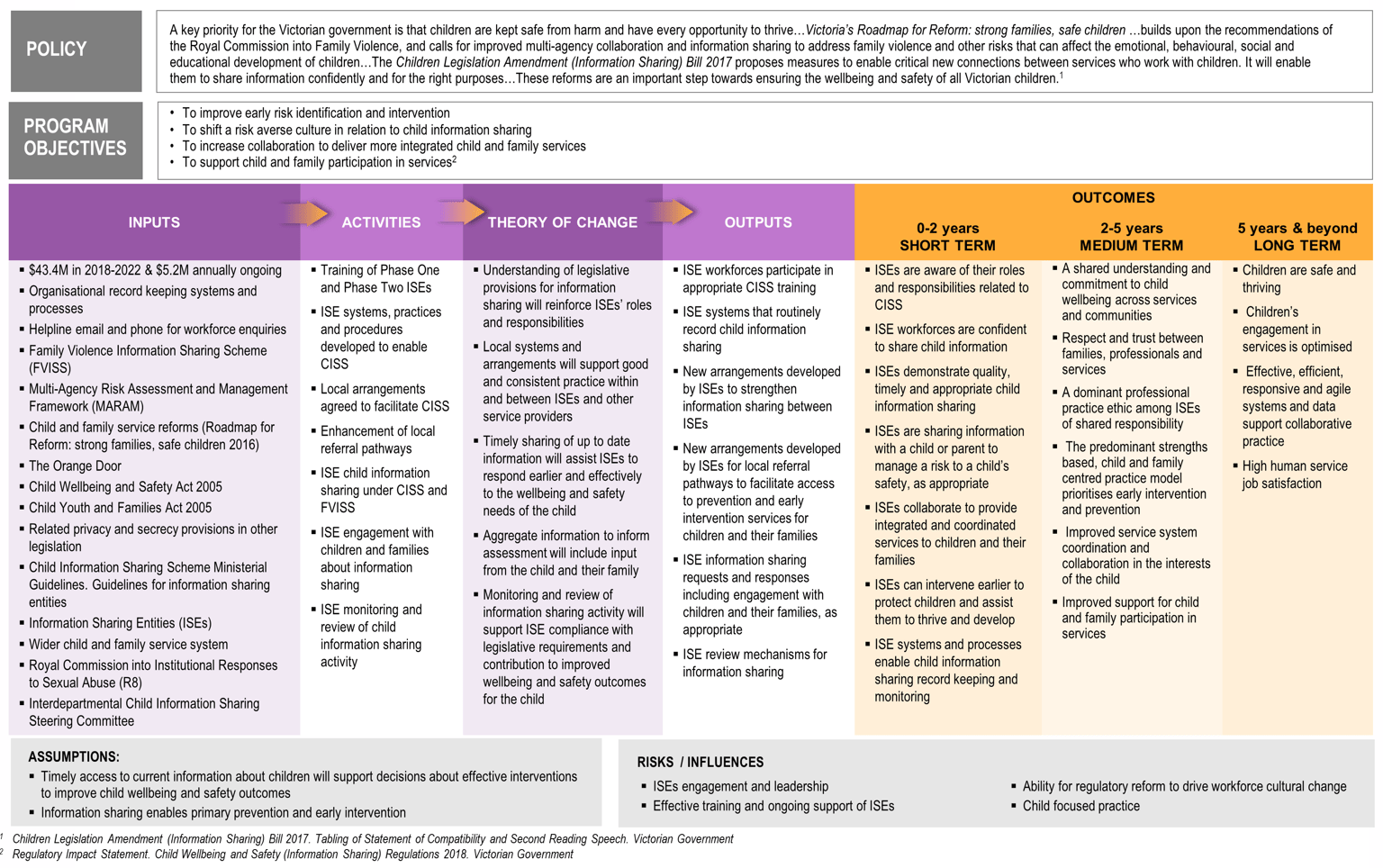| Policy |
|---|
|
A key priority for the Victorian government is that children are kept safe from harm and have every opportunity to thrive…Victoria’s Roadmap for Reform: strong families, safe children …builds upon the recommendations of the Royal Commission into Family Violence, and calls for improved multi-agency collaboration and information sharing to address family violence and other risks that can affect the emotional, behavioural, social and educational development of children…The Children Legislation Amendment (Information Sharing) Bill 2017 proposes measures to enable critical new connections between services who work with children. It will enable them to share information confidently and for the right purposes…These reforms are an important step towards ensuring the wellbeing and safety of all Victorian children. [1] |
| Program objectives |
|---|
|
| Inputs | Activities | Theory of change | Outputs |
|---|---|---|---|
|
|
|
|
| Outcomes | ||
|---|---|---|
| 0-2 years SHORT TERM |
2-5 years MEDIUM TERM |
5 years & beyond LONG TERM |
|
|
|
|
Assumptions |
|---|
|
| Risks / influences |
|---|
|
[1] Children Legislation Amendment (Information Sharing) Bill 2017. Tabling of Statement of Compatibility and Second Reading Speech. Victorian Government
[2] Regulatory Impact Statement. Child Wellbeing and Safety (Information Sharing) Regulations 2018. Victorian Government
Updated
